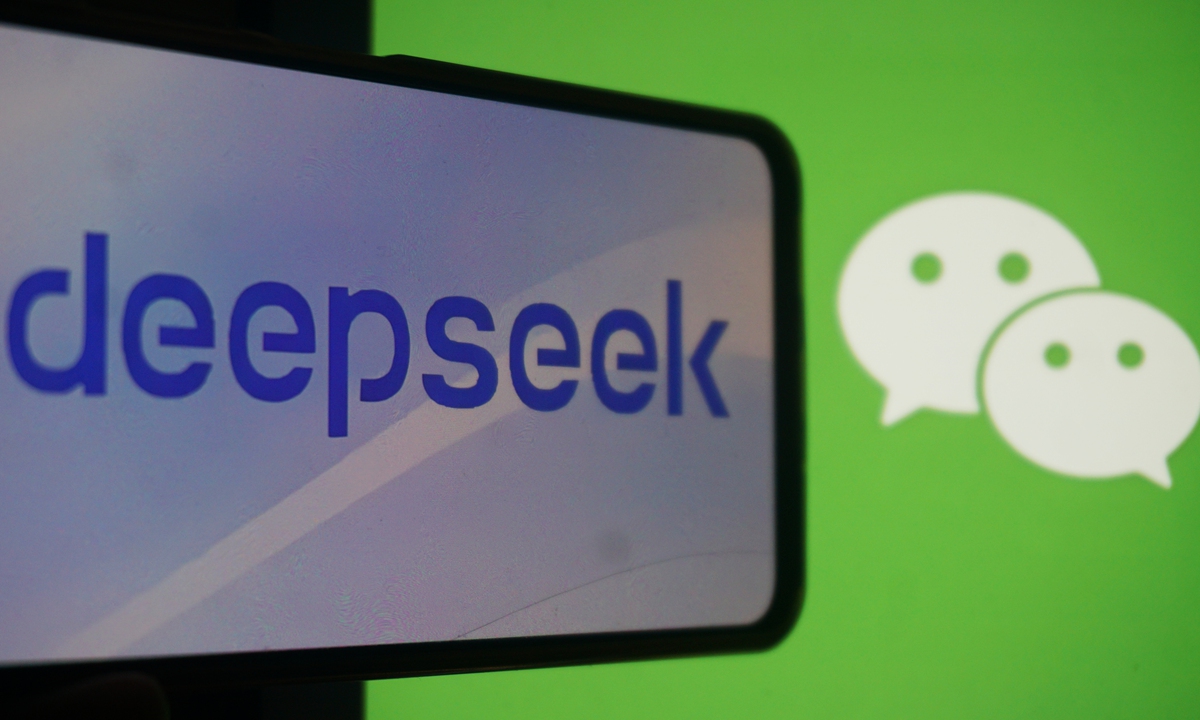
Deepseek and WeChat Photo: VCG
In the current wave of rapid artificial intelligence (AI) development,
mk the choice between open-source and closed-source models by AI companies has again aroused heated discussion and widespread attention.
Elon Musk's AI company xAI will release its Grok 3 chatbot with a live demo at 8 pm on Monday Pacific time (12 pm on Tuesday Beijing time), the billionaire said in a post on X on Sunday. As Musk announced in October 2024 that xAI would open-source its models, whether Grok 3 will be open-source or not has become a focus of attention.
Chinese search engine giant Baidu said on Friday it would make its next-generation AI model Ernie open-source from June 30, as announced on its official WeChat account on Friday. This is seen as a major shift from its previous closed-source model.
These developments highlight the growing significance of open-source models in the AI industry, particularly for China.
Before the rise of Chinese AI company DeepSeek, which recently surprised the world with the launch of its R1 model and open-source ecosystem, the debate about open-source and closed-source was more about technical choices and didn't attract so much attention.
From the perspective of technological development, open-source models can promote rapid iteration and innovation in technology. Behind the demand for open-source lies the self-driving force of industry development and the demand for more application scenarios. The reason why there is a surge of interest in the open-source model within the industry can be largely attributed to global attention to the breakthroughs of AI technology development in China.
Last week, when speaking at the AI Action Summit in Paris, former Google chief Eric Schmidt warned that Western countries need to focus on building open-source AI models or risk losing out to China in the global race to develop the cutting-edge technology, the Financial Times reported.
The significance of open-source models for AI technology in China lies in promoting rapid iteration and innovation in technology. The open-source model lowers technical barriers, allowing more enterprises and developers to participate in the application development of AI technology, thereby driving the digital transformation and intelligent upgrading of the industry.
More importantly, China has already established large-scale, multi-level industrial advantages in manufacturing and other fields, and these areas can leverage open-source AI technology to achieve further breakthroughs.
For instance, as a vital component of the global supply chain, the introduction of AI technology can further enhance the competitiveness of Chinese manufacturing. Through open-source AI models, the manufacturing sector can achieve intelligent upgrades, such as optimizing production processes with machine learning, improving quality inspection efficiency through computer vision, and reducing equipment failures with predictive maintenance. These AI applications can enhance production efficiency and lower production costs, promoting the development of Chinese manufacturing toward higher-end and intelligent directions.
The recent success of DeepSeek's R1 model and its open-source ecosystem exemplifies the transformative potential of open-source AI in China. DeepSeek's technology has already been adopted by industries ranging from telecommunications and vehicles to education and finance. Notably, WeChat, China's leading social media platform, is reportedly testing the integration of DeepSeek's R1 model, signaling the widespread adoption of open-source AI across diverse sectors.
This rapid implementation of AI technology is made possible by China's vast and varied application scenarios. From smart factories to intelligent healthcare systems, open-source AI is driving innovation at an unprecedented pace, solidifying China's position as a global leader in AI development.
This trend not only contributes to the development of China's AI industry but also provides enlightenment for the progress of global AI technology.
Global Times

